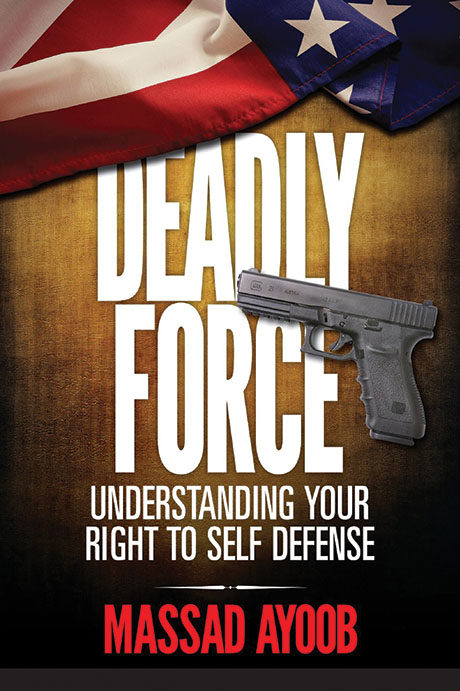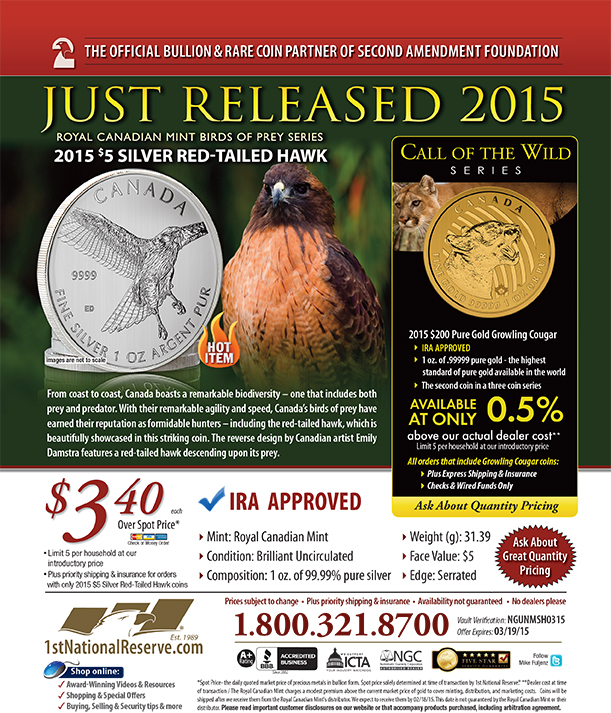Review by Chris Bird
DEADLY FORCE: Understanding Your Right to Self Defense, by Massad Ayoob. 2014. Published by Krause Publications, Dept. TGM, 700 East State St., Iola, WI 54990. Price $21.99, plus shipping. Available at most book stores or online at: gundigeststore.com.
Massad Ayoob is probably the best known author and writer on matters of armed self-defense. Ever since his first book, In the Gravest Extreme: The Role of the Firearm in Personal Protection, came out in 1980, Ayoob has been writing about self-defense incidents and methods for magazines such as American Handgunner and in books such as Combat Handgunnery. As he says in the introduction to Deadly Force, the new book does not replace In the Gravest Extreme, but rather augments it.
Since the late 1970s, Ayoob has been appearing in courts across the country as an expert witness on the use of firearms in self-defense. Although he is  not a lawyer, he has a lawyer’s understanding of the legal system as it relates to police officers and ordinary people defending themselves or others. Last fall I was fortunate to take one of Ayoob’s courses and much of what we learned in the classroom in two days is expanded upon in Deadly Force.
not a lawyer, he has a lawyer’s understanding of the legal system as it relates to police officers and ordinary people defending themselves or others. Last fall I was fortunate to take one of Ayoob’s courses and much of what we learned in the classroom in two days is expanded upon in Deadly Force.
If you use deadly force in defending yourself or someone you are protecting, the standard by which you will be judged is: “What would a reasonable and prudent person have done, in the same situation, knowing what the defendant knew?”
Ayoob points out that a prosecutor or plaintive’s lawyer will try to exclude from a jury anybody who has a concealed carry license or knowledge of firearms. Therefore it becomes necessary to educate the jury whose members’ knowledge about guns is limited to what they have seen on television.
For example, it is standard procedure to keep shooting until the assailant is no longer a threat. I once spoke to a prosecutor in Indianapolis who said she had no problem with the pizza delivery man using deadly force in shooting someone who was trying to rob him at gunpoint, but she had a problem with him shooting the assailant between 10 and 15 times. The robber was still pointing his gun at the delivery man after the last shot was fired. He was not prosecuted.
Ayoob says three things have to be present to justify the use of deadly force: ability, opportunity and jeopardy. Under ability, he explains the disparity of force concept when the person being attacked can use deadly force even though the attacker or attackers are not armed. This applies when two or more people are attacking one person, when a man is attacking a woman, when a young, fit man attacks a senior citizen or a child.
Opportunity is usually a factor of distance; can the attacker reach the would-be victim before the latter can draw his or her gun and stop the attack? Jeopardy is: what has the threat done or said that convinces the defender that he is about to be violently attacked?
I was out of the country during George Zimmerman’s trial in the Trayvon Martin case so my knowledge of the trial was limited. However, in a 20-part blog written after the verdict, Ayoob gives an excellent analysis of the factors involved. He explains how the media rushed to judgment before the facts were known in much the same way they did in the shooting last year of Michael Brown by a police officer in Ferguson, MO. In both cases Brown and Martin were black while the shooters were not. In both cases the defendants acted in self-defense.
Deadly Force is an excellent warning for citizens who carry concealed and should be read, not just once, but once a year by those of us who value the right to defend ourselves against violent attack.
Chris Bird is the author of The Concealed Handgun Manual now in its sixth edition. He is also author of Thank God I Had a Gun: True Accounts of Self-Defense, second edition. Both are published by Privateer Publications and are available from the publisher at 888-700-4333 or from bookstores nationwide.




